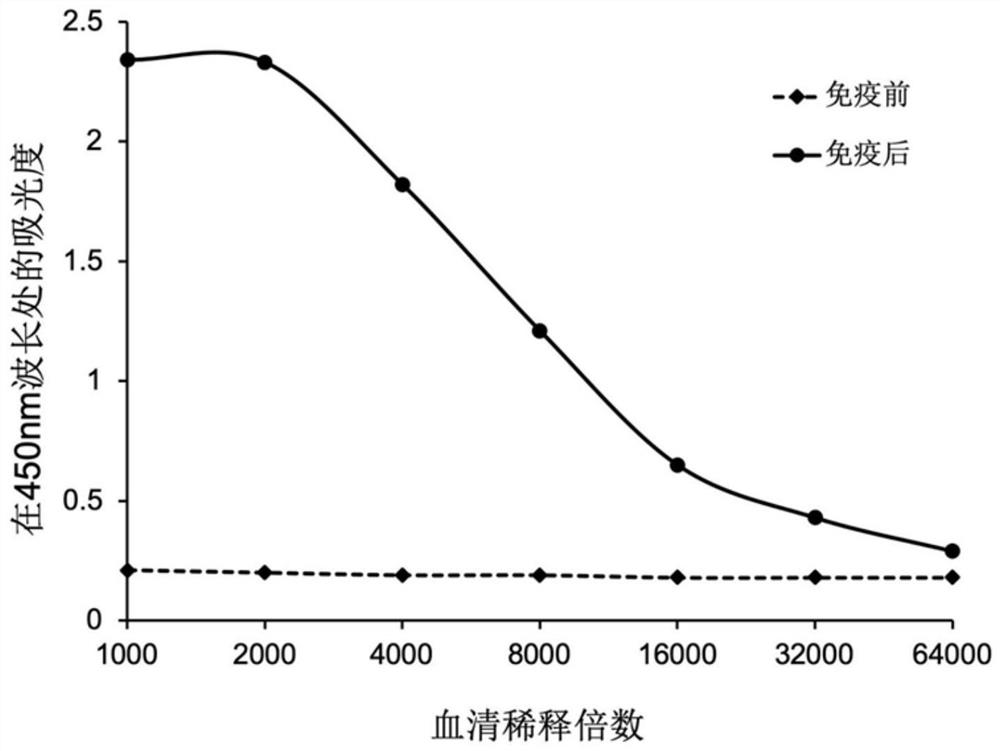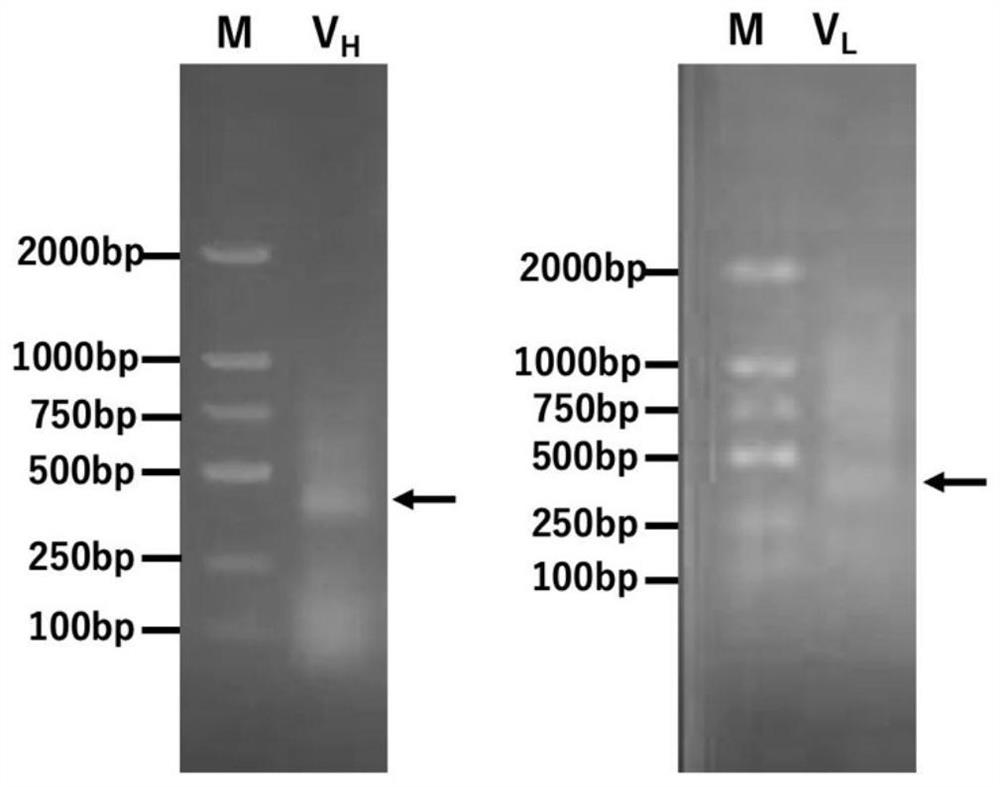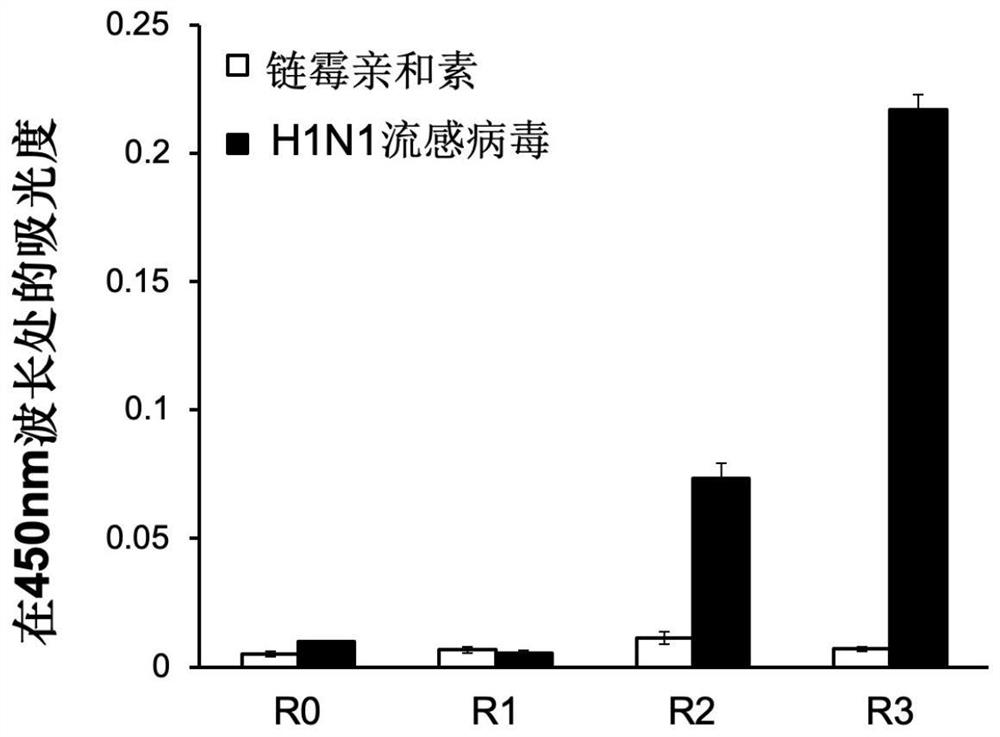A h1n1 influenza virus antibody and its application in ultra-trace detection of h1n1 virus
An influenza virus and antibody technology, applied in the field of biotechnology influenza virus antibodies, can solve the problems of undiminished virulence and transmission performance, patient neuraminidase inhibitor resistance, side effects, etc., and achieve important economic and social significance. Effect
- Summary
- Abstract
- Description
- Claims
- Application Information
AI Technical Summary
Problems solved by technology
Method used
Image
Examples
Embodiment
[0048] Use inactivated H1N1 virus particles to immunize mice, and after influenza virus antibodies appear in the mouse blood, remove the spleen of the mice, extract the total ribonucleic acid (RNA) and synthesize DNA (cDNA) with a complementary base sequence to the RNA chain , using antibody-specific primers, perform a polymerase chain reaction (PCR) to amplify the antibody gene. After the antibody gene was processed, it was cloned into the phage display vector pDong1, and the constructed vector was used to further transform Escherichia coli TG-1 to make a phage display antibody library. The H1N1 virus was screened to obtain an antibody F1, which can bind to the H1N1 virus but not to bovine serum albumin, and has specificity to the H1N1 virus. The specific process is as follows:
[0049] 1. Immunization of mice and confirmation of anti-H1N1 antibody in mouse serum after immunization
[0050] Firstly, mice were immunized with inactivated H1N1A / Beijing / 262 / 95 virus. The mice ...
PUM
| Property | Measurement | Unit |
|---|---|---|
| molecular weight | aaaaa | aaaaa |
| absorbance | aaaaa | aaaaa |
Abstract
Description
Claims
Application Information
 Login to View More
Login to View More - R&D
- Intellectual Property
- Life Sciences
- Materials
- Tech Scout
- Unparalleled Data Quality
- Higher Quality Content
- 60% Fewer Hallucinations
Browse by: Latest US Patents, China's latest patents, Technical Efficacy Thesaurus, Application Domain, Technology Topic, Popular Technical Reports.
© 2025 PatSnap. All rights reserved.Legal|Privacy policy|Modern Slavery Act Transparency Statement|Sitemap|About US| Contact US: help@patsnap.com



